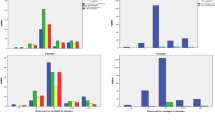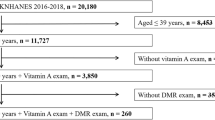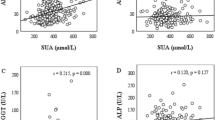Abstract
Objective: A case-control study was conducted to evaluate the effects of diabetes mellitus on serum levels of vitamin A, α-carotene, β-carotene, α-tocopherol, serum and urine RBP.
Subjects: One hundred and seven patients with Type 2 diabetes mellitus (28–74 y) were recruited from those attending a primary health care clinic in King Khalid University Hospital in Riyadh City (Saudi Arabia). They were matched for age and sex with 143 healthy individuals.
Methods: Fasting blood samples and 10 h urine collections were obtained from all subjects. Levels of vitamins and carotenoids in serum measured by high performance liquid chromatography (HPLC), and of retinol binding protein (RBP) in serum and urine by an enzyme-linked immunosorbent assay (ELISA).
Results: The mean serum concentrations of retinol, α-carotene, and α-tocopherol were similar in both groups after correction of lipid soluble vitamins for serum lipids levels. However, serum β-carotene concentration was significantly higher in control subjects than diabetics (P=0.002). Serum and urine RBP concentrations were significantly higher in diabetics than in controls (P=0.0001 ). In normal subjects (but not diabetics) serum concentrations of retinol and RBP were higher in men than in women (P=0.02, P=0.0001 respectively). In both normal and diabetic subjects, serum levels of α-tocopherol (P=0.007) and urine RBP (P=0.005), were higher in men than women. Urinary excretion of RBP was significantly higher in diabetic patients with renal impairment than other diabetics or controls (P=0.0001). There was a negative correlation between fasting blood glucose (FBG) concentration and serum β-carotene (P=0.008) in the total combined group and a positive correlation between FBG and urinary RBP/creatinine (P=0.009) in diabetic patients.
Conclusion: Serum β-carotene concentration was significantly lower in diabetic patients than controls. Serum retinol concentration in patients with diabetes was normal, yet serum and urine RBP concentrations were significantly higher in diabetics than in controls.
Sponsorship: The research was sponsored by King Faisal Specialist Hospital and Research Center.
This is a preview of subscription content, access via your institution
Access options
Subscribe to this journal
Receive 12 print issues and online access
$259.00 per year
only $21.58 per issue
Buy this article
- Purchase on Springer Link
- Instant access to full article PDF
Prices may be subject to local taxes which are calculated during checkout
Similar content being viewed by others
Author information
Authors and Affiliations
Contributions
Guarantor: Dr MA Abahusain
Contributors: Dr MA Abahusain contributed to the conception, design, analysis, interpretation of data and drafting of this article and enquiries concerning the data reported. Drs J Wright, JWT Dickerson and EB de Vol contributed to the analysis, interpretation of data and a critical review of this article.
Rights and permissions
About this article
Cite this article
Abahusain, M., Wright, J., Dickerson, J. et al. Retinol, α-tocopherol and carotenoids in diabetes. Eur J Clin Nutr 53, 630–635 (1999). https://doi.org/10.1038/sj.ejcn.1600825
Received:
Revised:
Accepted:
Published:
Issue Date:
DOI: https://doi.org/10.1038/sj.ejcn.1600825
Keywords
This article is cited by
-
Blood retinol and retinol-binding protein concentrations are associated with diabetes: a systematic review and meta-analysis of observational studies
European Journal of Nutrition (2022)
-
Retinol binding protein 4 and risk of type 2 diabetes in Singapore Chinese men and women: a nested case-control study
Nutrition & Metabolism (2019)
-
Pigments in an iridescent bacterium, Cellulophaga fucicola, isolated from Antarctica
Antonie van Leeuwenhoek (2019)
-
ProCarDB: a database of bacterial carotenoids
BMC Microbiology (2016)
-
Carotenoids of indigenous citrus species from Aceh and its in vitro antioxidant, antidiabetic and antibacterial activities
European Food Research and Technology (2016)



